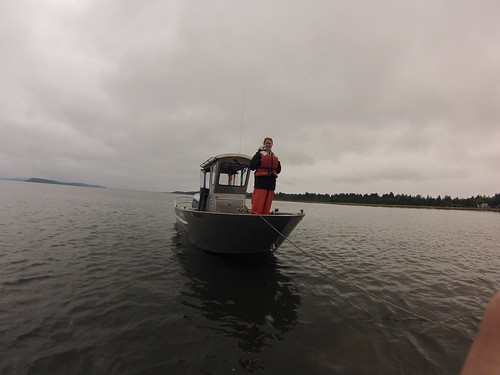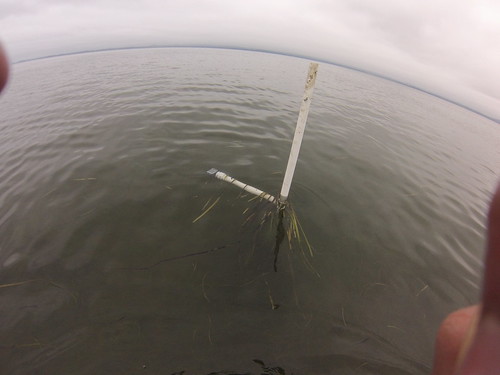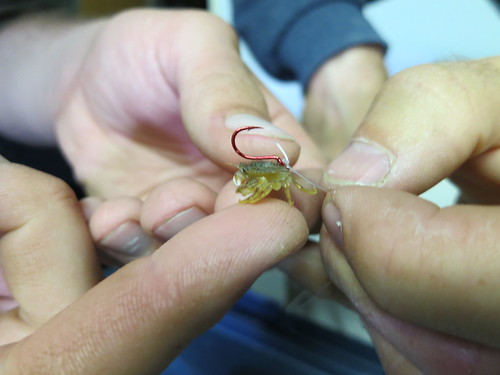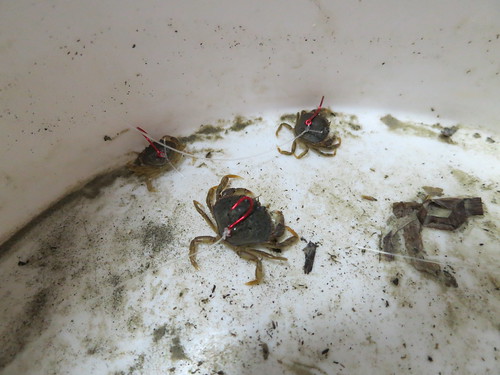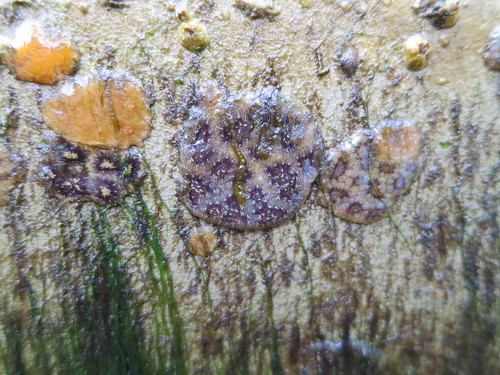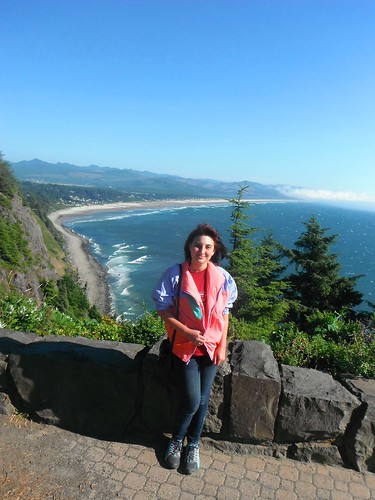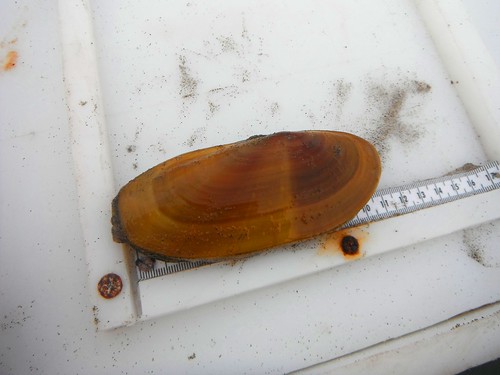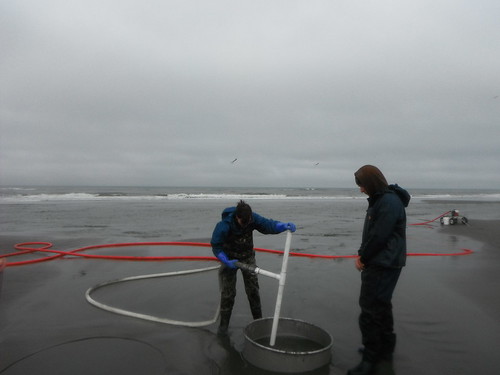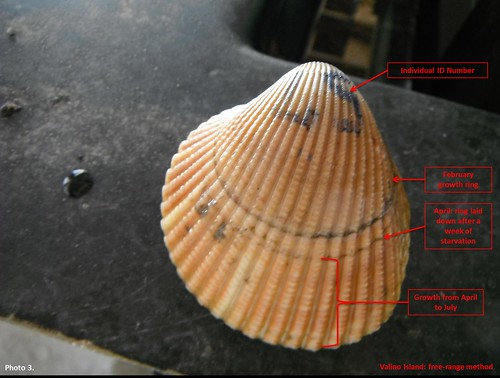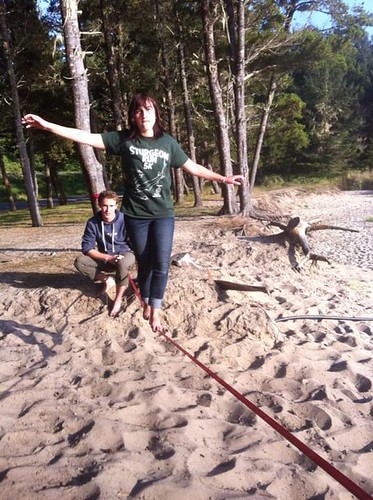1060 miles
20 hours
14 interviews
And one day to say everything I need to say.
How could I possibly, in a five minute presentation, communicate the nuances of the 14 conversations I had with fishers up and down the Oregon coast? How could I make sure that they weren’t being misrepresented by my words, since some voices would disagree with others? Would the audience–which I knew would mostly be comprised of people in the biophysical sciences–understand the relevance of this type of work? These were the doubts rolling through my mind leading up to Friday, August 17th–the Oregon Sea Grant Summer Scholars Final Symposium and, coincidentally, my 22nd birthday.
Never before have I designed a scientific poster, let alone present my scientific work in front of people who weren’t my peers or professors. As a dancer, I have been on stage hundreds of times. I know that chemically in the body, the feelings of excitement and anxiety are essentially the same. Cortisol levels spike. Your heart races. The last thing you want to do is wait. The only difference between these emotions is whether you are interpreting the situation in a positive or negative light. These feelings are not unfamiliar to me, but they caught me by surprise last Friday. All thirteen scholars–who I have come to adore over these past 10 weeks–were coming together one last time. My work, which was shared and understood within a small circle, was finally going to take the stage. I was exhausted from traveling long distances and preparing my materials. And I had high expectations for myself on this significant day. But I would not have it any other way. Excited and shaky, I took the floor in front of a standing room only audience.

My final symposium poster, which provides an overview of the projects I have been involved in and their context within the Human Dimensions Project of the ODFW Marine Reserves Program. Click the picture to view the poster in detail. If you have any questions about my work, feel free to comment below or message me at mbrist96@uw.edu
I briefly explained the place of human dimensions research in environmental policy. In my words, it boils down to analyzing a particular situation through multiple social sciences lenses at different units of people. Economics, anthropology, sociology, and psychology all contribute to a holistic understanding of the world. I explained how my research dealt with individuals rather than groups of people or geographical regions, and what that looked like. I remember hearing a few empathetic gasps when I said I reviewed 785 written responses to a well-being survey four times over. And exclamations of surprise when I showed them the complex framework I used to assess how people think and what they value. I explained that being trained to think this way set me up perfectly for what I was brought to Oregon to do in the first place: to interview fishers on their perspectives of the marine reserves. For if you can’t get to the root of what people care about, you lose all potential to find common ground.
At this point in the presentation I felt myself balancing the need to stay on script for the sake of time with the desire to deviate into stories. I drove over 1060 miles this summer for interviews–which is the equivalent of driving the Oregon coast three times over. I conducted interviews from Astoria along the Columbia River to Brookings, which is nine minutes from the California border. Each and every person I talked to had distinct backgrounds and countless stories, and were more than open to talk about their lives as fishers, challenges related to fisheries management, conservation, and the marine reserves. I can honestly say that my perception of fishers has changed radically since coming to Oregon. They are highly satisfied with their lifestyle and are in tune with the natural environment that their business depends upon. Many of them wish to collaborate with scientists and managers to create policies that serve the greater good, so long as their input is not used against them. These insights are just a snapshot of what I ascertained from 20 hours of conversation.
But what I couldn’t tell the audience was about everything that happened in between these conversations. Moments punctuated by extensive beaches, meeting new people, and exploring the Oregon coast. Places referenced in interviews that I had the privilege of seeing with my own eyes. And the coastal cultures that my mentor Tommy introduced to me–I got to feel those firsthand. Traveling as a part of the Human Dimensions Project helped me understand the people of the Oregon coast more so than reading could ever do.

Haystack Rock at Cannon Beach, where I stayed for three days while conducting interviews on the North Coast.
For example, when I spent one weekend traveling to the North Coast, I was introduced to fellow Summer Scholar Dylan Rozansky’s work environment at the Haystack Rock Awareness Program (HRAP). On Cannon Beach, a whole community comes together to educate visitors on the ecology of Haystack Rock and to ensure its protection for the future.

The Historic Bayfront of Florence, one of my favorite places on the Oregon coast. However, it’s a really hard call to pick favorites. I feel so lucky to have traveled the entire coast this summer, and to have been exposed to so many different, beautiful places.
On a sunny Saturday morning I interviewed a fisher in Florence–a quaint retirement community an hour south of Newport. I took the time to wander through art shops and happened upon a bead shop called the Waterlily Studio, whose products are based out of appreciation for the natural history of our planet and cultural uses of nature. I loved everything about the shop, and then got into a conversation with the owner about the future of our world. Our fears with the Southern Resident Killer Whales (SRKW’s) in the Puget Sound, and what we can do to save them. And I was more motivated than ever to take everything I have learned this summer–about engaging people in conversations and marine policy–to do something about this. When I return home to Seattle this Sunday, attending a public action meeting on the fate of the SRKW’s is one of the first things on my agenda.

A blood red sun in the smoke of California fires. I stayed in Gold Beach on the Rogue River while conducting South Coast interviews.
I am feeling a lot of things in this present moment. It is bittersweet to leave this incredible slice of the world. And already, so many of the Scholars have moved on to the next chapter of their lives–whether that be school or jobs. And I wish them all the luck in the world. Of all the emotions in my heart, I feel grateful to have been entrusted with this work, to have had such supportive mentors, and to have met such an outstanding group of people.
So all I have left to say now is…
Thank you.



